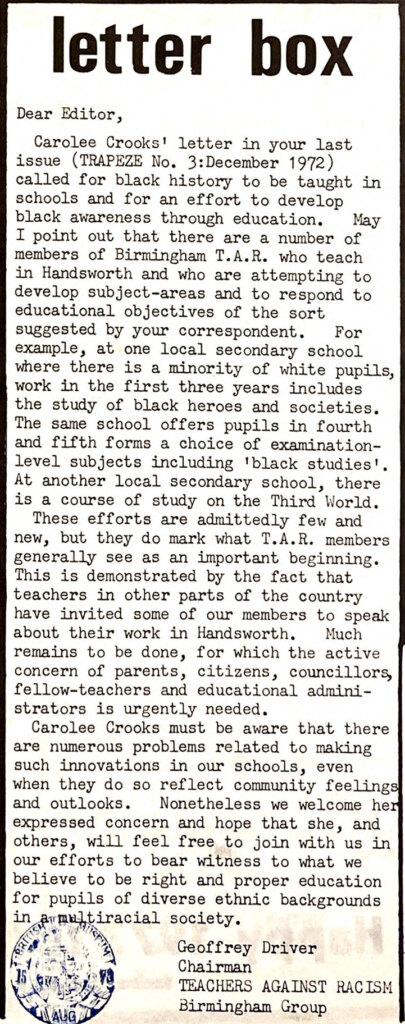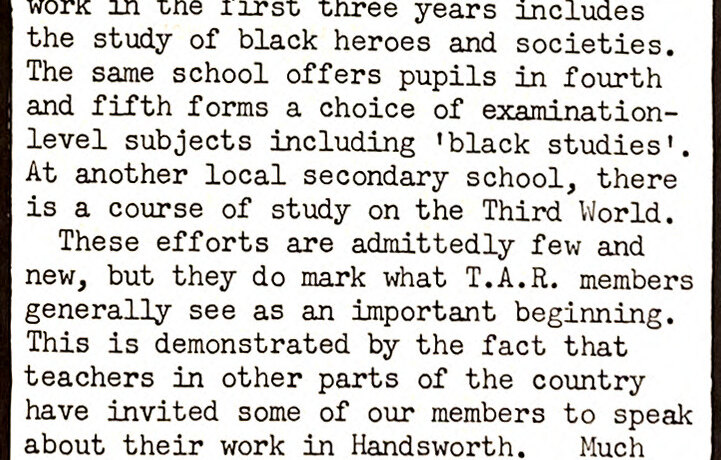
Letters to the editor – community newspapers
This is my second post on a work-in-progress research project on community news in Birmingham in the 1970s/80. This time, I take a look at the readers’ letters that were published in community newspapers.
Karin Wahl-Jorgenson (1999) has argued that the letters pages of newspapers are nothing more than a public relations exercise. It’s a way for media owners to pretend that citizens have a voice in the media, that the newspaper is a trusted custodian of the public sphere. Citizens can tell the editor that they got it right, or got it wrong, or failed to take account of a particular viewpoint.
Yet, claims Wahl-Jorgenson, “instead of being based on a process of democratic decision making, the selection of letters becomes premised on profit making and centered on the institution of the newspaper,” (1999: 58).
This view may be true of the mainstream, commercial press that Wahl-Jorgenson studied, but what of the letters pages of the community press? There has been little academic attention here as such publications are themselves seen to ‘solve’ the problem of the democratic accountability of the media by placing the citizen at the heart of their production.
Many publications were/are by their nature anti-capitalist, not just editorially but often simply by eschewing established media business models – ie: by people doing it for free.
In my research into the community press in Birmingham in the 1970s I can look at the editorial content of the publications and see how place is discussed through stories about housing, traffic, parks, urban regeneration schemes, immigration rights, etc. But the letters pages have been something of a revelation. I simply hadn’t excepted to see so many letters.
Almost all of the publications I have seen to date publish reader responses to individual articles or reflections on the publication as a whole. Even with the modest number of publications I have identified so far, collectively there are a lot of letters.

Letter to the editor in Trapeze, 1973, discussing the teaching of black history in local schools (click to enlarge)
But how to analyse them? Any analysis will have to bear in mind, as Wahl-Jorgenson did, the curatorial role of the editor(s). Wahl-Jorgenson identified four ‘rules’ that formed the criteria editors used for the inclusion of letters: relevance, entertainment, brevity, and authority.
Unspoken as they were, the ‘rules’ are a form of cultural mediation that “determine whose voices and concerns are systematically privileged, and whose never stand a chance of being heard” (2002: 70).
But unlike mainstream publications, community newspapers had far fewer letters and from my interviews so far it is clear that the more common practice was to just publish anything that came in.
Thus, maybe an analysis of them at face value is possible. In that case, the rich reflections on place that they contain are a treasure trove for the researcher.
Letters pages have to be seen as just one way in which citizens participated in production practices of the community press. They were ahead of the game in that sense, with Wahl-Jorgenson lamenting that the mainstream should recognise the value of: “inviting community members into the pages and assisting them with the process of expression” (2002: 78) in order to stave off their decline and once again be seen as “more sensitive to their communities” (79).
In lieu of any significant progress on this research (it will come, I promise…), here is a tantalising excerpt from Saltley News (July 1974), with reflections on the quality of water supplies in Pakistan and in Birmingham (originally published in Urdu, this excerpt from the English translation issue):
“I have got problems with the water supply to my house. The water pressure is so low it is difficult even to wash our hands or clothes. I come from a village called Kandor in Mirpur, Pakistan, and our village has always been known for its shortage of water. When the Mangla Dam was constructed, there was water all around us – but still, not a drop for us to drink. So in Kandor, the drinking water shortage remains. I left Kandor and came to England. I had heard that it always rained here and that water is in abundance. It does rain here day and night but I seem to have brought with me from Kandor the fate of water shortage. Every time I go to the tap here I am reminded of my home in Kandor.”
References:
Wahl Jorgensen, K (1999) Letters to the editor, Peace Review, 11(1), pp:53-59.
Wahl Jorgensen, K (2002) Understanding the Conditions for Public Discourse: four rules for selecting letters to the editor, Journalism Studies, 3(1), pp:69-81.
